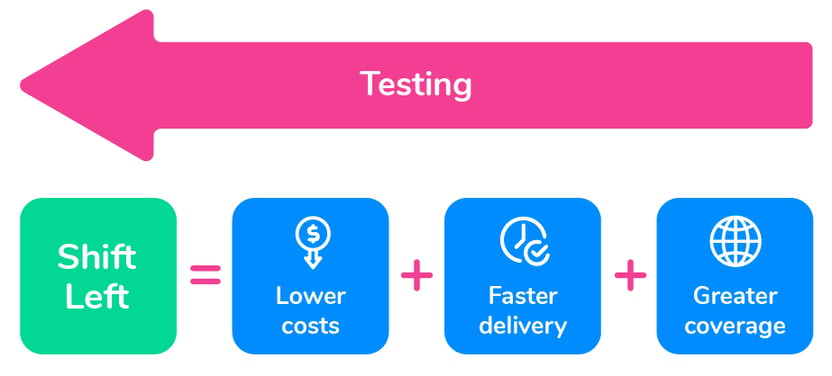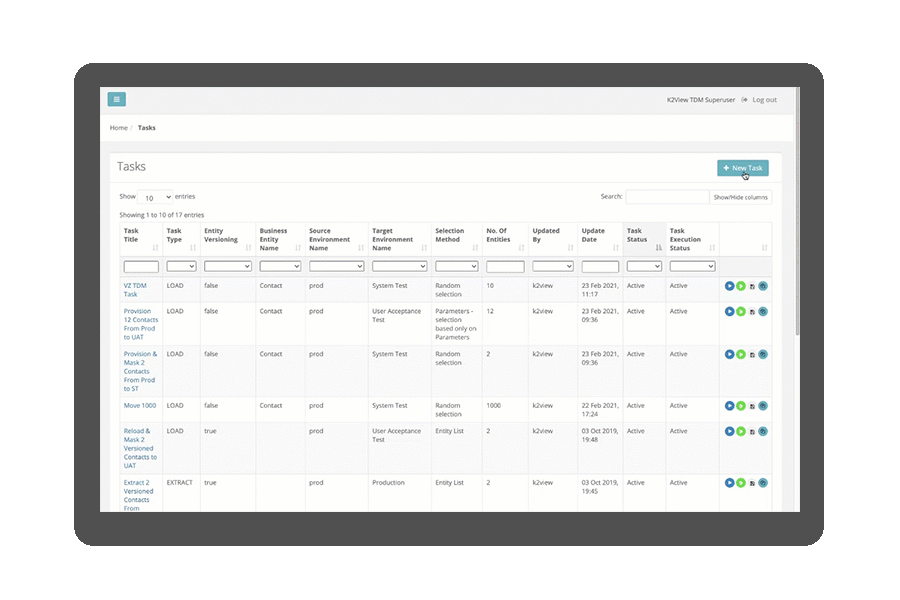Shift-left testing refers to testing earlier on in the software development lifecycle to find and fix bugs, improve app quality, and reduce DevOps costs.
Intro to the Shift-Left Testing Approach
It seems that despite the massive investment in testing, in terms of both time and budget, when new apps hit the market, they face far too many critical production failures. These failures cost enterprises $61 billion annually, and send a clear message that something needs to shift.
Enter the shift-left testing approach, which has transformed agile software delivery and raises the standards of quality testing. The idea at the base of this approach is to include testing in the earliest stages of the development process rather than saving it for last. This seems simple enough, but what are the unique benefits of the shift-left testing approach? Let’s dive in to find out.
The Advantages of Shift-Left Testing
The most prominent reasons to embrace this approach have to do with efficiency, cost, and product quality.
-
Reducing costs: According to the Systems Sciences Institute at IBM, discovering and resolving a defect after the product has been deployed costs around 100 times more than doing so during the requirements phase. The business value is clear and straightforward.
-
Increased coverage: Thanks to the shift-left testing approach, more tests can be achieved in less time. Testing teams find it much easier to identify issues earlier in the process, when product features are less complex. When testing is put on the back burner, teams often have very little time to do it thoroughly. As a result, bugs and imperfections are left unattended and wait for the next update.
-
Accelerated delivery and increased innovation: The agile approach to software development allows teams to iterate faster. Without it, teams invest 80% of their time on debugging and maintenance tasks, which leaves far less time to focus on meaningful innovation – and creates bottlenecks, and setbacks.

Testing from the earliest stages of the development process increases efficiency and innovation.
The Critical Role of Data in the Shift-Left Testing Approach
When we discussed the importance of data privacy in software development, we focused on the principles of privacy by design. You might say that the shift-left testing approach is “testing by design” that relies on data as an integral part of any development task.
To implement the shift-left testing approach, a modern test data generation solution should be able to prepare the necessary data earlier and faster than traditional solutions could. In order to execute every use case and uncover failures, high-quality test data is needed to test the relevant functionality. If your agile software development team is looking to shift-left the testing process, without doing the same for test data management provisioning, you’ll soon face an impossible task.
Don’t Compromise on Test Data Quality
Preparing sufficient high-quality testing data is hard enough. The growing use of microservices, with an architecture that componentizes data, makes it an even greater challenge.
The quality of data is also essential. Poor-quality data might have severe consequences on the reliability of testing results, leading to low test coverage, and demanding rework with additional setbacks and costs. And large companies need to provision test data at an enterprise scale.

Agile test data management tools extract, cleanse, mask, encrypt, and move data to target test environments, in minutes.
Get There Early with Shift-Left Data Provisioning
The good news is that a solution is within reach. By following these principles, companies can overcome the above challenges.
-
Planning: Take data provisioning into account when you prepare your test cases. Consider it an integral part of the software development process, and devote the required time and resources.
-
Specification: Specify the test data requirements by defining the production sources of the required data, the volume of the data needed, the need for data masking (via data masking tools), and the level of data integrity required to perform the progression and regression tests – whether performed manually or automatically. Focus on building a path that will test all the needed use cases, and state which data is needed each step of the way.
-
Automated data provisioning solutions: Use dedicated test data management tools to get the data you need, when you need it.
Data runs the software world. Implementing a shift-left testing approach to automate test data provisioning, and accelerate DevOps delivery cycles, is essential. Create better software products, quicker, by taking the entity-based test data management approach.









-1.png)



